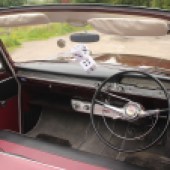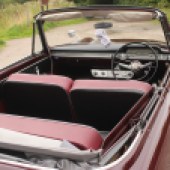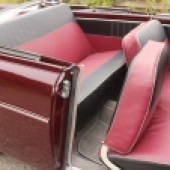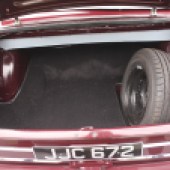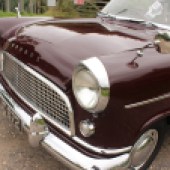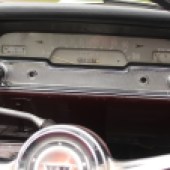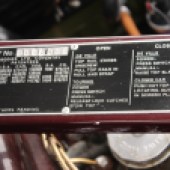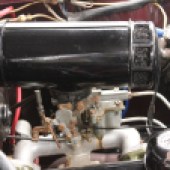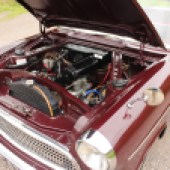The Ford Consul was one of the brand’s first world cars and in Carbodies convertible form has a great 1960s charm. We get behind the wheel of a great example
Words: Iain Wakefield
The Ford Consul Mk2 made its first public appearance at the 1956 London Motor Show and was the base model in a range of three new four-door saloons the motoring press dubbed ‘The Three Graces’. Designed in Detroit and Dagenham under the Ford code name of 204E, the Consul’s transatlantic styling incorporated design cues taken from the Ford Thunderbird and Fairlane. The revised, stylish new model became an instant hit.
This wasn’t the first use of the Consul name, as Ford had launched the curvaceous Mk1 back in 1950 along with its six-cylinder Zephyr sibling. Ford later introduced the top-of-the-range Zodiac; these two popular models were included in the revised range and shared the Mk2 Consul’s over-engineered monocoque. The Consul Mk2 was a much bigger car than its predecessor. It had a longer wheelbase and was powered by a larger 1703cc OHV inline-four that was powerful enough for a top speed of just over 80mph.
Like the model it replaced, the Consul Mk2 was equipped with a three-speed gearbox shifted by a column change; the latter arrangement combined with a large front bench seat provided a reasonably comfortable seating arrangement for two adult passengers sitting alongside the driver. Ford added a convertible option to the three-car range in 1953, and whereas the Zephyr and Zodiac both received a partly power operated hood, the Consul’s soft top was a manually operated affair.
The convertible conversion on the three big Fords was undertaken by Coventry-based Carbodies, where to give the chopped down monocoque the required amount of torsional stiffness, a large X-frame box section was welded to the base of the convertible’s floorpan. In 1957 Ford introduced a deluxe version of the Consul featuring a higher level of equipment, while two years later the roof profile was lowered; these revised models are easily identified by having redesigned taillight clusters and stainless steel brightwork. Front disc brakes were offered as an option on the Consul from 1960 and became a standard fit the following year when the model’s name was changed to the Consul 375.
The drophead Consul we have here is a 1961 Deluxe model and has only covered 700 miles since undergoing a major rebuild that included a bare-metal respray and a professional re-trim. During the extensive rebuild, the Consul’s engine was overhauled and fitted with a new radiator and carburettor. To improve the car’s stopping power, a power servo was fitted to the refurbished braking system; this modification really makes a difference, as this heavy car pulls up without any fuss at the lightest prod of the pedal.
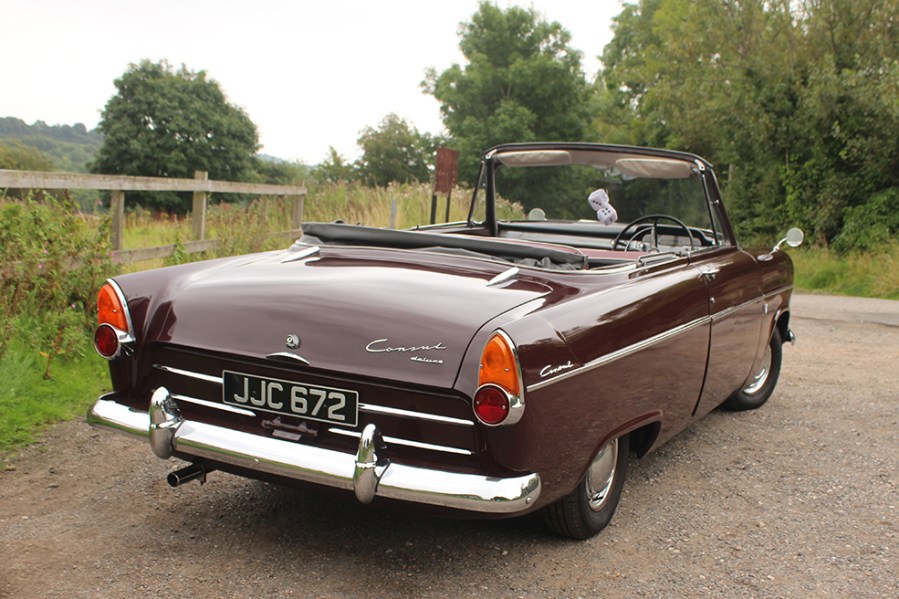
The soft top on this Consul is partly power operated like the Z cars’ tops are: pressing the button on the right hand-side of the dashboard when the roof’s folded raises the hood to just over the driver’s head. To compete the operation, two folding side legs at the front of the frame have to be manually pushed out and secured in the mounting fittings on the header rail. Once the hood has been raised, a neat tonneau cover in the same grey-coloured material as the fabric top can be fitted over the exposed folded framework to tidy up the rear deck. The restored interior of this eye-catching open topped Ford can only be described as superb and the attention to detail extends to the neat lines of stitching on the carpeting covering the transmission tunnel.
Access to the spacious rear seat is gained by tipping a section of the front back rest forward. This folds at a slight angle to provide extra space and as this topless Ford doesn’t have any seatbelt webbing to get in the way, accessing the back seat of this four-seat convertible should be a rather graceful affair rather than the usual undignified struggle.
This rare drophead Ford has been professionally restored to a very high standard and the maroon paintwork has a deep shine, with no ominous ripples showing in any of the panels. The shut lines are particularly good, especially between the door bottoms and sills and the solid looking underside has been preserved with what looks like a generous coat of wax based underseal. Both the doors open and shut easily and the interior of the carpeted boot appeared to be exceptionally clean and tidy.
There’s loads of space in the front of this stylish 1960s convertible and the previous owner obviously thought a pair of fluffy dice dangling off the interior mirror added a bit of rock and roll ambience to the car’s smart interior. A period-style strip speedometer with a fuel and temperature gauge at each end sits directly in front of the driver and a brand new battery had the Consul’s 1903cc engine fired up in double quick time.
Although there’s no power steering on this big convertible, a large diameter steering wheel makes manoeuvring this large car relatively easy at low speeds and the feel through the wheel at speed is excellent. It’s always fun getting to grips with a column gear change and to select first on the Consul the lever has to be pulled towards the driver and then moved down to engage the non-synchromesh lower ratio. Second gear is engaged by moving the lever up and away from the driver and top is selected by pulling the lever straight down through neutral, while reverse is found at the top opposite second gear.
Once mastered, the three ratios can be swapped quickly and with a deft bit of double-declutching first gear can be easily selected on the move. A new set of tyres was fitted to the car during its 2014 rebuild and handling, while definitely not slick, is impressive for such a heavy car. If you’re looking for a full-size ’60s classic with room for four, then a Consul is worth considering.
The 59bhp inline-four pulls superbly well, especially in second gear and cruising with the top down at a steady 65mph is effortless and remarkably draught-free for front seat passengers.





